What are the January birth flowers?
January, the first month of the year, is associated with new beginnings and fresh starts. It is also the month that marks the arrival of two beautiful birth flowers: the carnation and the snowdrop. Each of these flowers carries its own unique symbolism and meaning, making them perfect choices for January-born individuals.
In this post, we will delve into the world of birth month flowers, exploring their meanings, origins, and fascinating facts. We will also discover how these flowers inspire art, creativity, and thoughtful gift ideas. So, let’s embark on this floral journey and uncover the beauty and significance of January birth month flowers.
Related Post: Birth Flowers for all 12 months
What is the History & Origin of Carnation?

The Carnation, scientifically known as Dianthus caryophyllus, boasts a rich history and an array of colors, each with its own unique meaning.
The name “Carnation” is thought to stem from “coronation” or “corone,” referring to the floral garlands used in ancient Greek ceremonial crowns, or possibly from the Latin “carnis” (flesh) reflecting its original pinkish-hued color.
Carnations have captivated people for centuries, with their cultivation dating back to ancient Roman and Greek times. These flowers have been symbols of love, fascination, and distinction throughout history.
But how did Carnations come to be linked with January? It’s believed that their ability to bloom in the cold winter months, coupled with their long-lasting and hearty nature, makes them a perfect representation of resilience and beauty in the face of adversity, much like the spirit needed to embark on a new year.
What does Carnation mean?
The Carnation, with its layers of ruffled petals and a sweet, subtle fragrance, is more than just a pretty face. This flower is steeped in symbolism and carries a wealth of meanings, particularly when it comes to the colors of its blooms:
- Red Carnations are all about deep love and admiration. Giving someone a red carnation is like saying, “You’re always in my heart.”
- White Carnations stand for purity, innocence, and in some traditions, they’re linked to good luck and pure love. They’re the perfect “I’m thinking of you” flower.
- Pink Carnations have a very special meaning, often tied to a mother’s love. According to legend, these flowers first appeared on earth from the Virgin Mary’s tears, making them a symbol of a mother’s undying love.
- Purple Carnations suggest capriciousness. They’re the wildcard of the carnation family, perfect for someone who loves surprises.
- Yellow Carnations might be beautiful, but they carry a message of disappointment or rejection. It’s a gentle way to say, “Things aren’t quite working out.”

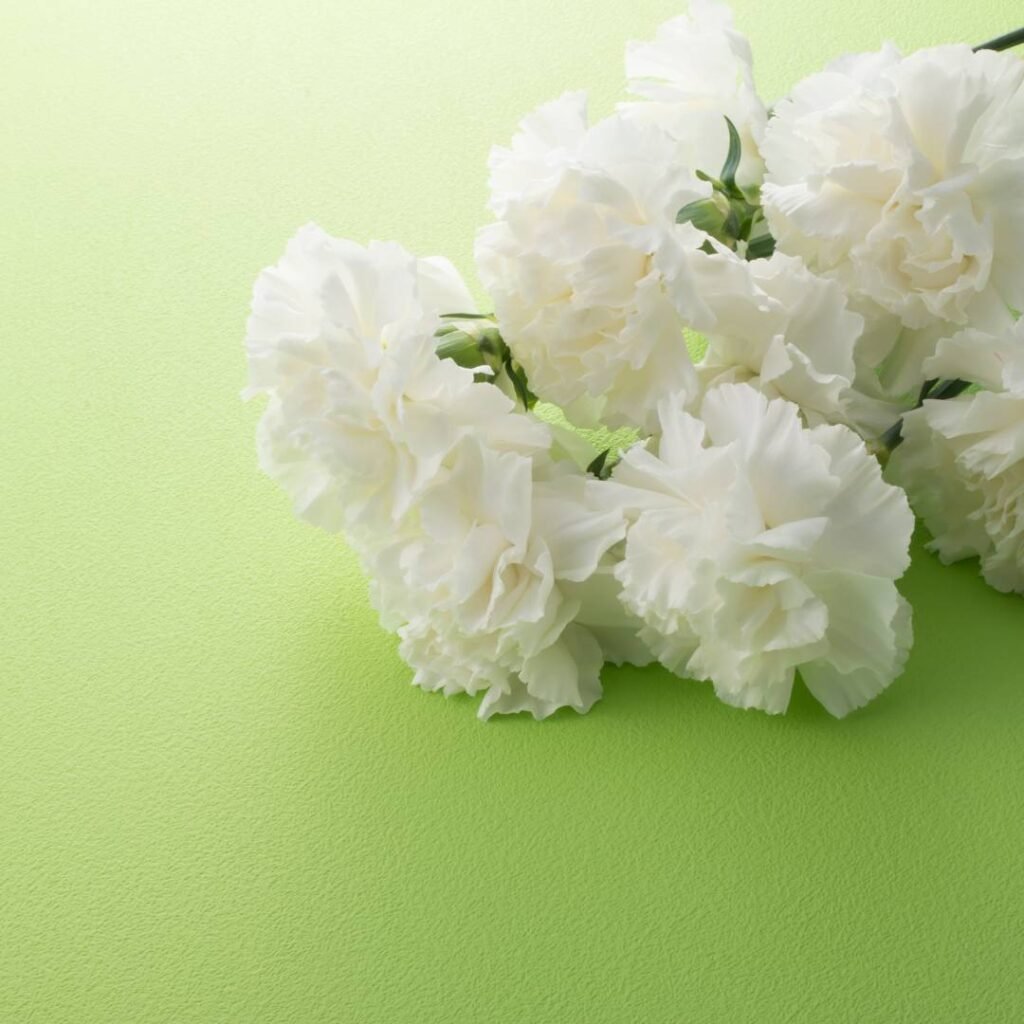

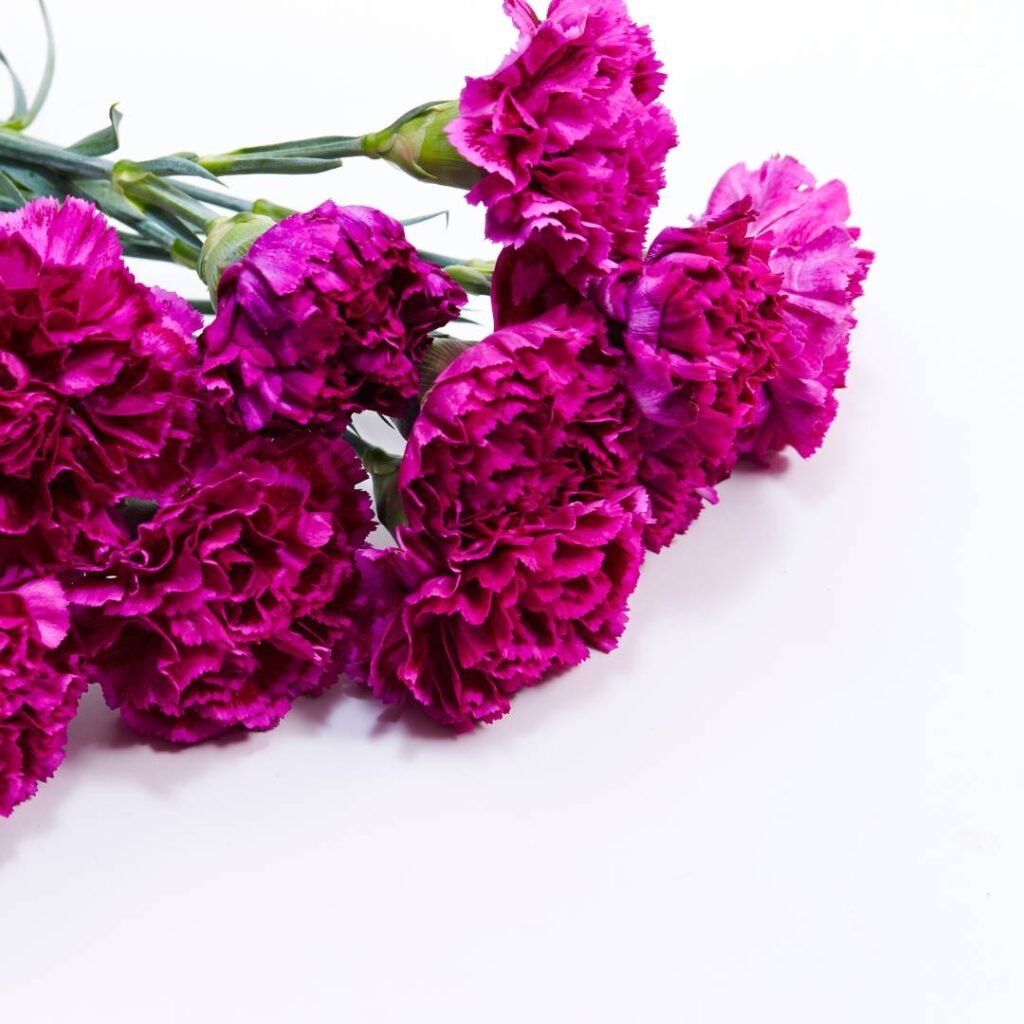
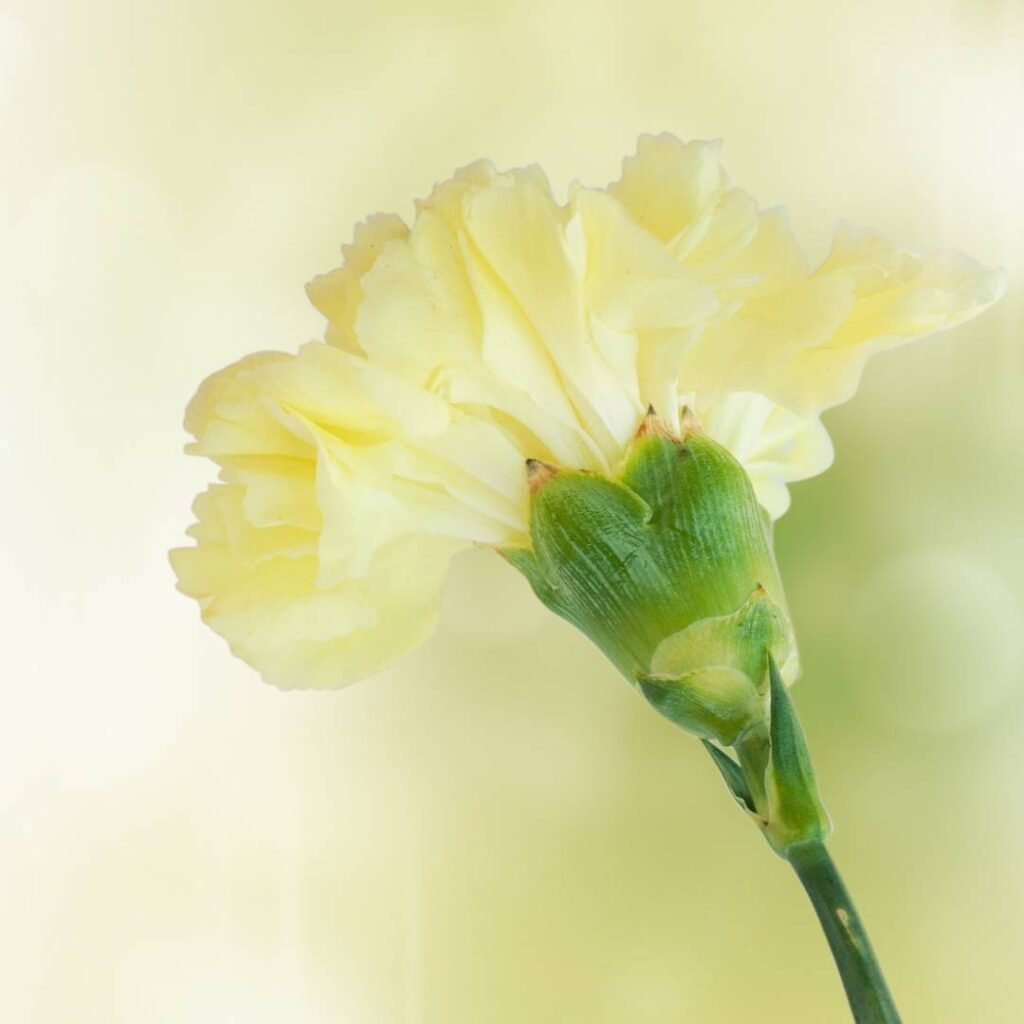
Each carnation color has its own story, making this flower incredibly versatile and expressive.
Interesting or less known facts about Carnations
Carnations are full of surprises, and there’s so much more to them than meets the eye. Here are some fascinating facts that might just make you see these flowers in a whole new light:
- A Drink Dyer: Carnations can change color based on what they drink! If you put a white carnation in dyed water, the petals will take on the color of the water, making for a fun experiment or a party trick.
- Historical Significance: Carnations have been around for more than 2,000 years and were used in Greek and Roman ceremonial crowns. They’ve stood the test of time as symbols of love and fascination.
- Cultural Icon: In Portugal, the Carnation Revolution of 1974, which led to a peaceful coup and the establishment of a democratic government, was named after this flower. Carnations were used as symbols of freedom and peace during this period.
- The First Boutonniere: Carnations are often worn in buttonholes during formal occasions. This tradition dates back to ancient times when flowers were worn for their fragrance and believed to ward off evil spirits.
How to care for Carnations
Carnations aren’t just beautiful; they’re also surprisingly easy to care for. Here are some tips to keep your carnations happy and healthy:
- Soil and Planting: Carnations love well-drained, neutral to slightly alkaline soil. Give them a sunny or partially sunny spot, and make sure they have room to breathe to avoid disease.
- Watering: These flowers need a good drink, especially when they’re getting settled in. But once they’re established, they’re pretty drought-tolerant. Just remember, they don’t like wet feet, so let the soil dry out a bit between waterings.
- Fertilization: A little food can go a long way. Use a general-purpose, slow-release fertilizer in the spring to keep them blooming brightly.
- Deadheading: Keep an eye out for spent blooms. Snipping these off will encourage more flowers and extend their blooming season.
What is the History & Origin of Snowdrops?

Snowdrops, with their delicate white petals, are more than just early bloomers. Their history and how they came to be associated with January is as intriguing as the flowers themselves:
- A Symbol of Hope: Snowdrops (Galanthus) are among the first flowers to bloom at the end of winter, often emerging through the snow. This makes them a symbol of hope and the coming spring.
- Mythological Origins: According to Greek mythology, snowdrops were created by the goddess Persephone as she was whisked away to the underworld by Hades. They symbolize her return to the earth and the subsequent arrival of spring.
- Victorian Flower Language: In the Victorian era, flowers were used to convey secret messages, and snowdrops were a symbol of hope and consolation.
- Resilient Bloomers: Snowdrops are known for their ability to bloom in freezing temperatures, even breaking through the snow. This resilience has made them a symbol of strength and the ability to overcome challenges, much like the fresh start promised by the new year.
What does Snowdrop mean?
Snowdrops, those delicate white flowers that peek through the snow, are more than just a sign that winter is coming to an end. They carry deep symbolism:
- Hope and Renewal: Snowdrops symbolize new beginnings and the hope of a fresh start. Their appearance is often seen as a sign that winter hardships are almost over and that brighter days are on the horizon.
- Purity and Innocence: The pure white color of snowdrops represents purity and innocence, making them a fitting flower for new beginnings and clean slates.
- Consolation and Sympathy: In the language of flowers, snowdrops also convey consolation and sympathy, making them a thoughtful gift for someone who has experienced loss or is going through a tough time.
Interesting or less known facts about Snowdrops
Snowdrops may be small, but they’re full of surprises. Here are some lesser-known facts about these early bloomers:
- Medicinal Properties: Snowdrops contain galantamine, an alkaloid used in the treatment of Alzheimer’s disease. This discovery highlights the flower’s not just aesthetic but also significant medicinal value.
- Protected Species: In some countries, snowdrops are protected by law. It’s illegal to collect them from the wild, which makes cultivated snowdrops even more special.
- Rare Varieties: There are over 20 species and numerous varieties of snowdrops, with some of the rarest fetching high prices among collectors. The allure of finding or growing a unique variety adds an extra layer of excitement to snowdrop enthusiasts.
- Harbingers of Spring: Snowdrops are often among the first flowers to bloom, sometimes even pushing through the snow. This incredible resilience and determination make them a symbol of hope and the ability to overcome challenges.
How to care for Snowdrops
Snowdrops are as resilient as they are beautiful, and they require very little maintenance once they’re established. Here’s how to care for these winter warriors:
- Soil and Planting: Snowdrops prefer moist, well-drained soil rich in organic matter. They thrive in light shade, such as under deciduous trees, where they can bask in the winter sun but are protected in summer.
- Watering: These flowers are pretty self-sufficient and usually don’t need additional watering, especially if they’re planted in an area that receives natural rainfall. However, during prolonged dry spells in autumn, a little extra water can help ensure a good display in late winter.
- Planting Time: Snowdrop bulbs should be planted in late summer to early autumn, at a depth of about 3 inches and spaced approximately 3 inches apart.
- Aftercare: Snowdrops are known for their ability to naturalize and spread over time. After blooming, allow the leaves to die back naturally, as this helps the bulbs store energy for the next year’s flowers.
January Birth Flower Comparison
| Month | Birth Flower | Characteristics | Symbolism |
|---|---|---|---|
| January | Carnation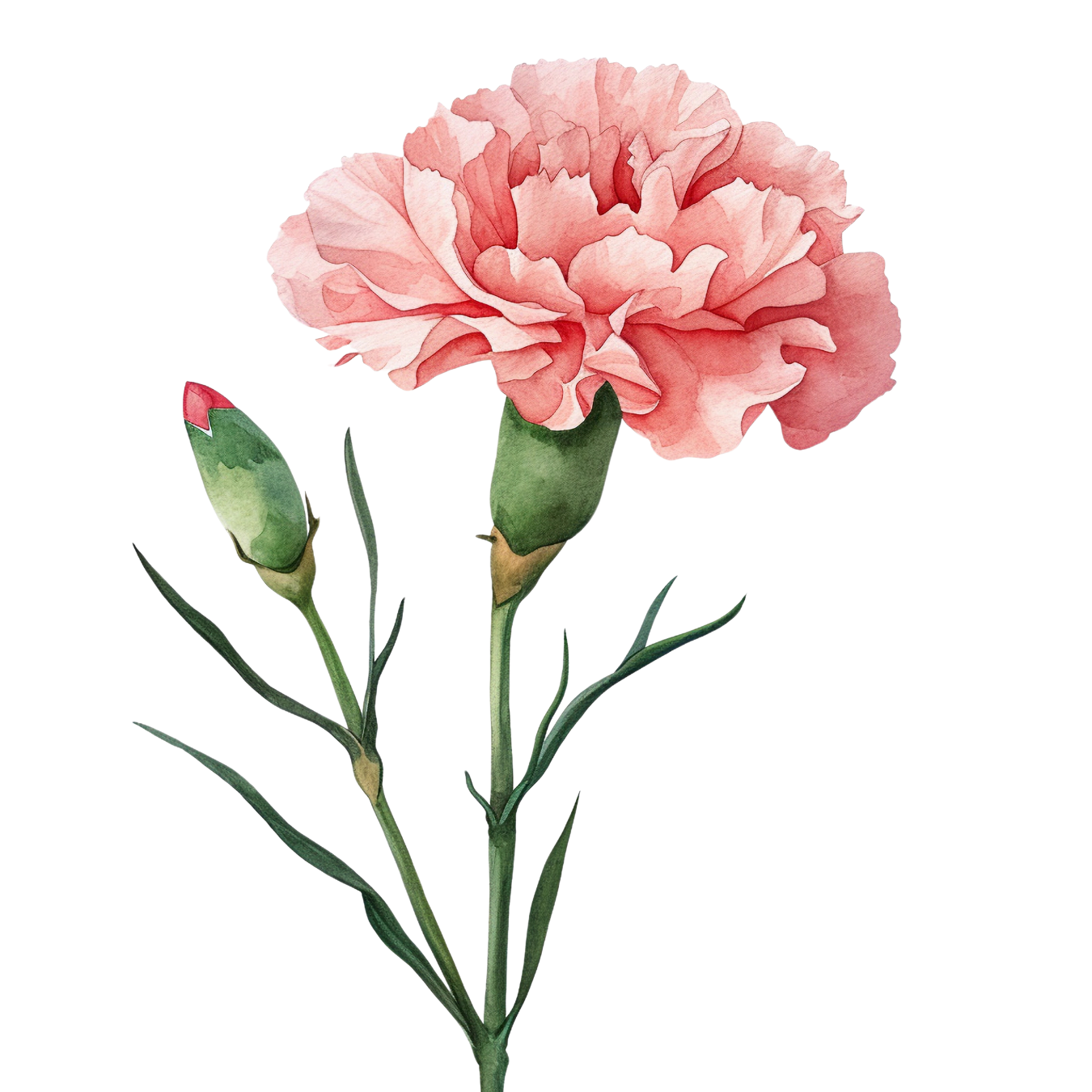 | Frilly petals, variety of colors, sweet fragrance | Love, fascination, distinction |
Snowdrop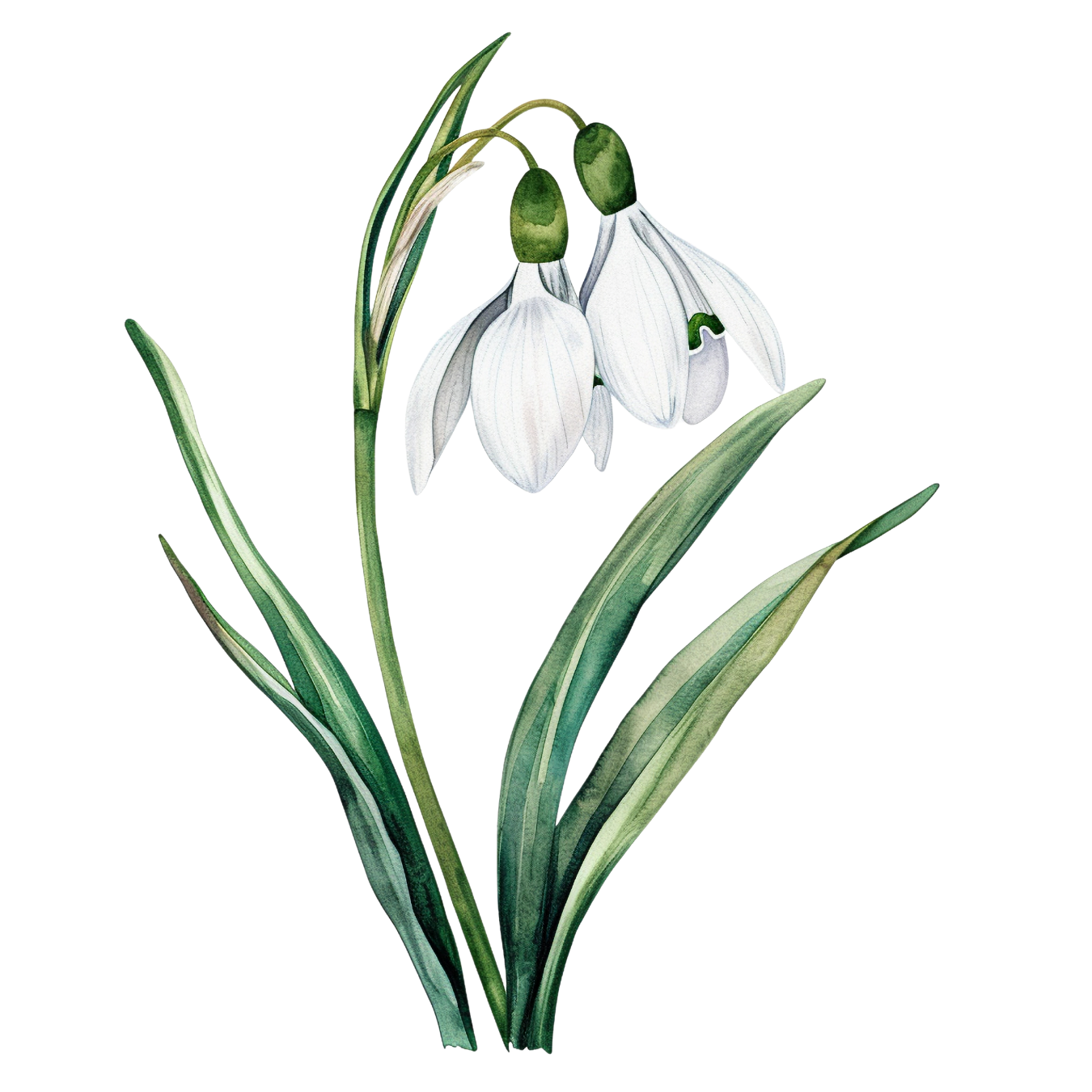 | Petite, bell-shaped, white petals, blooms in late winter | Hope, purity, rebirth |
What are the popular January birth flower gifts?
January’s birth flowers, Carnations and Snowdrops, offer a wealth of gifting options. Here are some popular ideas:
- Bouquets and Arrangements: A classic bouquet combining the vibrant hues of Carnations with the pure simplicity of Snowdrops makes for a thoughtful and beautiful gift.
- Potted Plants: For a gift that keeps on giving, consider potted Carnations or indoor Snowdrop bulbs that can bloom indoors.
- Themed Merchandise: From scented candles and soaps to stationery and artwork featuring Carnations and Snowdrops, there’s no shortage of themed merchandise that celebrates January’s birth flowers.
Here are some more gift ideas featuring January’s birth flowers to explore.






What are some artistic or creative applications of January birth flower?
Carnations and Snowdrops don’t just make great gifts; they’re also a source of inspiration for artists and crafters:
- Home Decor: Pressed Carnation and Snowdrop flowers can be framed or used in glass art pieces, adding a touch of natural beauty to any space.
- Personal Accessories: From jewelry featuring the delicate shapes of these flowers to embroidered items like scarves or hats, there’s a wide range of ways to wear January’s birth flowers.
- Tattoos: For a more permanent tribute, tattoos of Carnations or Snowdrops can be a beautiful and meaningful way to honor a loved one or signify a new beginning.
- DIY Crafts: Whether it’s making your own Carnation-infused oils or creating Snowdrop-themed paper crafts, there are countless DIY projects to celebrate these special blooms.





Conclusion
January’s birth flowers, the Carnation and the Snowdrop, are more than just beautiful additions to our gardens and homes. They carry deep meanings, symbolizing love, fascination, purity, and the resilience to bloom even in the harshest conditions. These flowers remind us that beauty can be found in the coldest times and that every new beginning comes with its own promise of hope and renewal. Whether you’re celebrating a January birthday, looking to brighten someone’s day, or simply want to appreciate the natural beauty these flowers offer, Carnations and Snowdrops are perfect for sharing and enjoying.
FAQs About January Birth Flowers
What are the January birth flowers?
January’s birth flowers are the Carnation and the Snowdrop.
What do Carnations symbolize?
Carnations symbolize love, fascination, and distinction. The color of the Carnation can affect its specific meaning, with red symbolizing deep love, white symbolizing purity, and pink symbolizing a mother’s love.
What do Snowdrops symbolize?
Snowdrops symbolize hope, rebirth, and the purity of new beginnings.
How should I care for Carnations?
Carnations need well-drained soil, full to partial sunlight, and regular watering without over-saturating the soil.
Can Snowdrops grow in cold climates?
Yes, Snowdrops are known for their ability to bloom in cold climates, often emerging through the snow.
Are there different varieties of Carnations?
Yes, there are numerous varieties of Carnations, each with its own unique color and sometimes even scent.
When is the best time to plant Snowdrops?
The best time to plant Snowdrop bulbs is in late summer to early autumn.
Can I grow Carnations indoors?
Yes, Carnations can be grown indoors as potted plants provided they receive enough sunlight and proper care.
Are Snowdrops safe for pets?
Snowdrops contain galantamine, which can be harmful if ingested, so it’s best to keep them out of reach of pets.
What are some creative ways to use January birth flowers in gifts?
January birth flowers can be used in bouquets, potted plants, themed merchandise, home decor, personal accessories, and even tattoos for creative and meaningful gifts.

